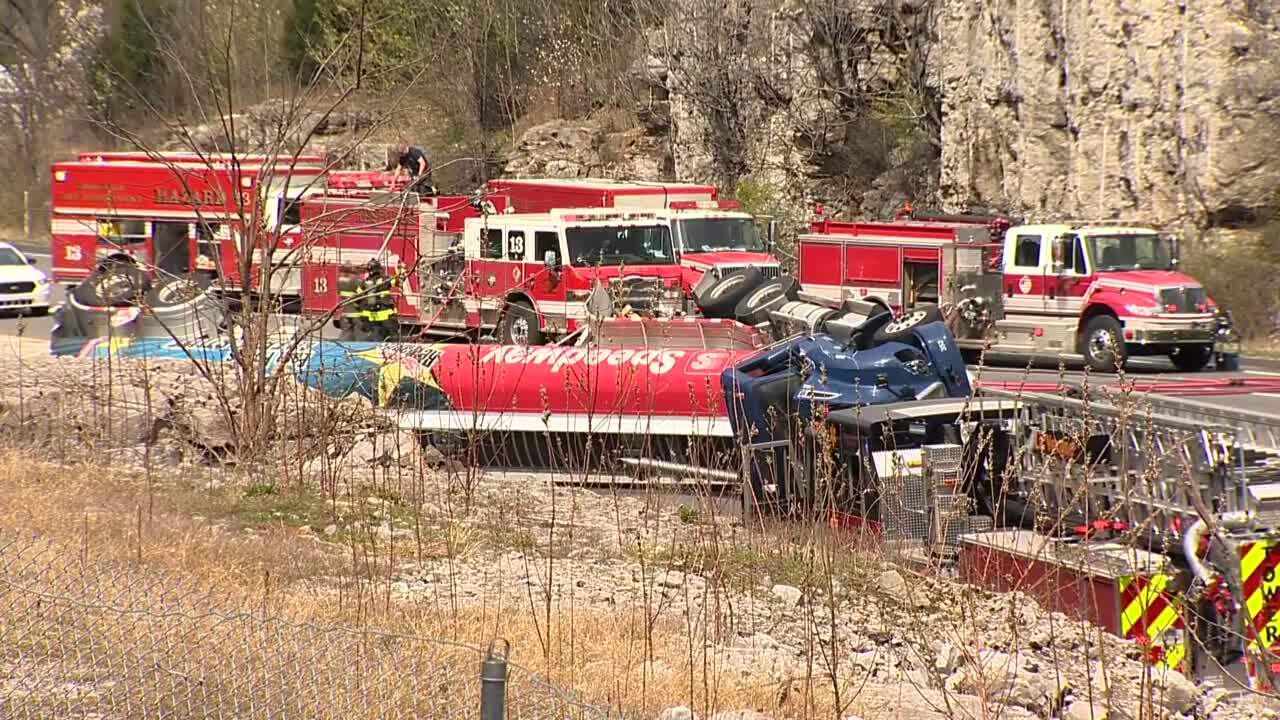Make no mistake about it - wrecks involving big trucks can be both devastating and deadly. Research shows that 4,842 large trucks were involved in a fatal crash and accounted for 9% of all vehicles involved in fatal crashes in 2019 (most recent data). It is also worth noting that 69% of injuries or fatalities occur in the other vehicle, followed by truck drivers at 29%, and non-occupants at 2%.
If you ever find yourself in a wreck with a semi, delivery truck, or any other large truck, it can be a scary situation. Make note of the following things you must do to protect yourself – both physically and legally – after the accident.
Truck accident attorneys at Bart Durham Injury Law have the investigative resources and advocacy skills needed to prove negligence in truck accident cases. Contact us today!
Ensure Your Own Safety
First and foremost, if you have been involved in a trucking accident, your safety and the safety of your passengers is the number one priority! Before you do anything else, do the following:
- Drive your vehicle off the road – if you are able – by pulling onto a shoulder.
- Turn on your flashers.
- Turn off the engine to reduce the risk of a fire.
- Take a deep breath as adrenaline has increased your blood pressure.
- Look over your body and your passengers’ for signs of injury.
- Your body and brain will be on high-alert, and this adrenaline rush is likely masking some of your physical pain.
Call 911, Note the Accident Involves a Truck
Just like most vehicle accidents, it is imperative that you call 911 as soon as possible following a trucking accident. Because a wreck involving a truck or 18-wheeler can be even more devastating, it is also helpful to inform the 911 dispatcher how many drivers or vehicles were in the accident so they can send an appropriate number of ambulances and first responders.
In fact, there are several serious, less-noticeable injuries that first-responders will look for in victims when they arrive on the scene of a trucking accident: internal bleeding, back injuries, and traumatic brain injuries (TBIs) are a few.
Accept Medical Attention on the Scene
If you and your vehicle’s passengers were affected by the trucking accident in any way – rear ended, pushed off the road, etc. – accept the medical attention of emergency dispatchers on the scene, for two reasons:
- You could have injuries you are not yet aware of (e.g. internal bleeding)
- Receiving medical attention later could make it more difficult to prove it was caused by the accident.
If you are experiencing pain, notice visible injuries, or feel faint, then do not move! Unless you are unsafe and need to exit your vehicle, stay in your seat and wait for first responders to arrive. You may have injuries that require care and special attention.
Take Photos, Video While You Wait
If you are safe and still waiting for help to arrive, take a few moments to take photos and videos; accident scene photos are evidence for insurance purposes and possibly in the event of a lawsuit.
Take photos and videos inside your vehicle, of your vehicle’s exterior, of your vehicle in-relation to the truck, and any other damages around the scene. You can even take photos of yourself and your injuries (but don’t take photos of other drivers without their permission).
Photos of the scene immediately after or soon-after the wreck also capture details, whether big or small, that you may find difficult to remember as more time passes. This is not uncommon for victims of car accidents; details and what-happened-when can become fuzzy in your mind as you come down from the adrenaline rush and begin to experience other emotions.
Collect Contact Information
Another incredible form of evidence that you can collect while on-the-scene of a trucking accident is the contact information of other drivers involved. Gather their name, home address, phone number and email address, as well as their insurance information and driver’s license number.
For the truck driver, collect all of this information along with the truck license plate number and the name of their employer/trucking company.
Eye-witnesses and bystanders are also worth collecting contact information from. Whether they saw the accident happen or stopped to help afterward, their personal accounts can help piece together more evidence about what happened leading up to the wreck or how things continued to unfold.
Things NOT to Do
As for a few things you shouldn’t do following a trucking accident, steer clear of the following in order to protect your rights:
- Admitting fault. Even if you know you were at-fault, there could be other factors that could reduce your liability; it is best to discuss details with your lawyer. But be honest and transparent with police officers and other first-responders on the scene, but avoid admitting fault.
- Saying “you’re fine” to your insurance agent/adjuster. In truth, your insurance agent can use anything you say about being “okay” or “totally fine” in order to offer you a smaller settlement. Tell them your lawyer will be in-touch.
- Posting about the accident to social media. Anything you post online can be used in court and can even hurt your case. DO NOT POST.
- Speaking with anyone from the trucking company. Even if they say they are contacting you to file their own insurance claim, a representative from the trucking company will, in fact, be looking for evidence to use against you. Don’t give a statement or talk with them without a lawyer present.
The person who will be in your corner following your wreck? An experienced personal injury lawyer! Bart Durham Injury Law's truck accident lawyers will work tirelessly to relieve stressors following your involvement in a truck wreck and to obtain the best possible settlement for you!



